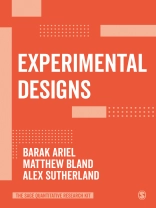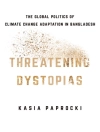The fourth book in The SAGE Quantitative Research Kit, this resource covers the basics of designing and conducting basic experiments, outlining the various types of experimental designs available to researchers, while providing step-by-step guidance on how to conduct your own experiment.
As well as an in-depth discussion of Random Controlled Trials (RCTs), this text highlights effective alternatives to this method and includes practical steps on how to successfully adopt them. Topics include:
· The advantages of randomisation
· How to avoid common design pitfalls that reduce the validity of experiments
· How to maintain controlled settings and pilot tests
· How to conduct quasi-experiments when RCTs are not an option
Practical and succintly written, this book will give you the know-how and confidence needed to succeed on your quantitative research journey.
Tabla de materias
Introduction
R is for Random
C is for Control
T is for Tests
Running Experimental Designs
Conclusions and Final Remarks
Sobre el autor
Alex is Chief Scientist and Director of Research and Evaluation at the Behavioural Insights Team (AKA ′the nudge unit′). Before joining BIT, Alex was at RAND Europe for 5.5 years, and spent three years teaching research design/quantitative methods at the University of Cambridge. Prior to Cambridge, he worked at the Centre for Criminology, University of Oxford and has a D.Phil. in sociology, also from Oxford. His interests cover evaluation of public policy, randomised trials, and research design.












